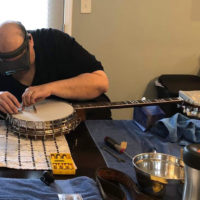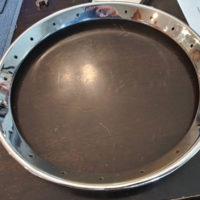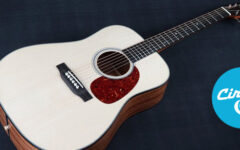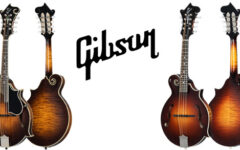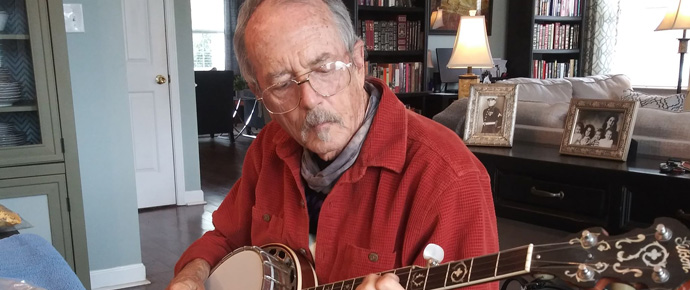
Tim Davis, proprietor of Davis Banjo & Inlay, has embarked on an ambitious project that will please lovers of the vintage banjo sound.
The detailed craftsman in Harrisburg, NC has only been building instruments for the past 6 years or so, and started after launching his custom fingerboard inlay work as a side project a year before that. He officially launched his business in 2015, with no formal training, after being a picker and loving the banjo for 35 years.
Davis has a Tom Adams banjo model available now, with a number of custom options available to the new owner, as well as his own Vintagetone banjo, made to resemble the prewar classics that early bluegrass was built on. Both are offered at a surprisingly low price for a professional grade instrument, and have found homes with some very appreciative buyers.
Now Tim has announced plans to create a Butch Robins model, based on detailed measurements and analysis of Butch’s 1930 Gibson RB-4. Anyone with a passion for prewar banjos is aware, if not familiar, with this iconic instrument which Robins played during two stints with Bill Monroe. It has been recorded many times, and is widely regarded as an excellent exemplar of why these fine banjos are so highly praised, and why people are willing to pay upwards toward six figures to own one. Gibson only made about 200 banjos between 1935 and 1947, the period of greatest demand these days.
Robins grew up and spent a lot of time in North Carolina, though he was born in Virginia, and was happy to cooperate with Tim in seeing this banjo made. He traveled down to the Davis shop this week, allowing Tim to take it down to parts and scope out the specifications, and most importantly, giving his blessing to taking a small scraping of the tone ring for analysis. Davis hopes that he can replicate the exact formula to pour a reproduction ring for his Butch Robins model banjo.
As a replica, the Davis banjo will be made of walnut for the neck and resonator, with a rosewood fingerboard and the Hearts & Flowers pattern as you see on Butch’s 4. As an expert on banjo fingerboard inlay, he will also replicate the look of the older Gibson work by using .012 bit to cut the inlay slots in the fingerboard and headstock overlay.
Tim shared a bit about how the whole process went down…
“Knowing that Butch was a huge influence on a lot of the players of my generation – and also knowing that his banjo is one of most important in the history of bluegrass, being an original flathead 5-string – and given Butch’s pedigree, especially with Monroe and his solo career, we wanted to copy that banjo and at the same time pay homage to Butch.
When we pitched that idea to Butch he was excited and open to the possibility, and told me that he would give me access to the banjo. He didn’t want to handcuff me in any way so that I could do whatever was needed to faithfully reproduce that banjo.
So we started with the neck and took exact measurements. We measured the profile of the width, the depth, the fingerboard thickness, copied the fret scale, and we’re having a CAD drawing of that made so we can reproduce that on our CNC.
Butch graciously allowed us to disassemble the banjo and get a sample of the tone ring, which we are taking to the lab for analysis today. When we have that back we will have some tone rings poured. We will turn them all in house.”
The walnut for the necks and the maple for the rims will be torrified to simulate the effect of aging on the wood, and will use hide glue in building the rims as was the custom before WWII.
“I hope to have a recreation of Butch’s 4, with a couple of modern refinements like a two-way truss rod.”
As long as nothing gets in the way, Tim expects to have the first Butch Robins reproduction Davis Banjo models ready this fall, with a projected selling price of $3499.
You can contact Davis through his web site.



